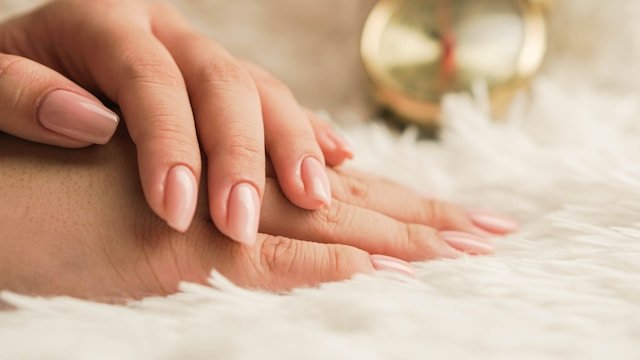
Nails play a critical role beyond just enhancing our looks—both in terms of visual appeal and functionality. They protect our fingertips, assist in daily tasks, and indicate our health status. Unfortunately, they often go unnoticed in our self-care rituals. Healthy nails signify more than mere beauty; they are indicators of hygiene and overall well-being. Whether you’re confronting brittle nails, discoloration, or a persistent fungal infection, taking proactive measures can ensure your nails remain robust and vibrant.
This article will delve into straightforward yet powerful strategies for maintaining nail wellness, preventing common dilemmas, and recognizing when specialized care is required.
The Importance of Nail Care
Nails can provide significant insight into your health, just like your skin and hair. For example, brittle nails might indicate a deficiency in essential vitamins or dehydration, while discoloration may signal an infection. Neglecting nail issues may seem inconsequential, but some conditions can escalate over time, leading to discomfort or difficulties in daily activities.
Key Nail Care Tips
1. Hydrate and Moisturize
Your nails require hydration just as much as your skin does. Dry nails are more likely to split and crack, increasing the risk of infections. Apply a hand cream or cuticle oil regularly to keep your nails and surrounding skin soft and moisturized.
2. Trim and File Regularly
Regular trimming of your nails helps prevent snagging and breakage. Use a sharp nail clipper and cut straight across to avoid ingrown nails. A gentle nail file can smooth rough edges and reduce the risk of splitting.
3. Protect Your Nails
If your daily activities may harm your nails—such as washing dishes or handling chemicals—don gloves. This added protection can minimize stress on your nails and keep them healthier.
4. Maintain a Balanced Diet
Strong nails begin from within. Incorporate foods high in biotin, zinc, and omega-3 fatty acids to encourage healthy nail growth. Eggs, nuts, and leafy greens are fantastic options for naturally enhancing your nail health.
Avoiding Nail Fungal Infections
Fungal infections are among the most prevalent issues affecting nails, particularly toenails. These infections thrive in warm, moist environments, making gyms, pools, and communal showers common sources of exposure. Symptoms may include nails that are thickened, discolored, or brittle.
Tips to Reduce Risk:
- Keep feet clean and dry, especially after sweating.
- Change socks daily and choose breathable footwear made from natural fabrics.
- Utilize antifungal sprays or powders in shoes as a preventive measure.
- Avoid sharing nail clippers, files, or footwear.
If you suspect an infection, seeking early treatment is essential. Various antifungal options are available that can help resolve the issue before it escalates.
Debunking Nail Care Myths
With a plethora of advice circulating online, it’s easy to fall for false nail care myths. Here are some common misconceptions debunked:
- Myth 1: Gel and acrylic nails permanently damage your natural nails.
While frequent use of artificial nails may weaken your natural nails over time, proper application and removal by a professional can minimize harm. Allow your nails to rest between applications for recovery. - Myth 2: Cuticles should always be cut.
Cuticles serve as a protective barrier against bacteria. Instead of cutting them, gently push them back using a soft tool and moisturize to keep them healthy. - Myth 3: Nails need to breathe.
Nails consist of keratin, a protein that doesn’t require oxygen. However, taking breaks from nail polish can help avoid staining and dehydration.
Managing Persistent Nail Problems
Despite diligent nail care, some issues may persist. Chronic brittleness, ongoing discoloration, or pain around the nail bed should be evaluated by a professional. These symptoms may indicate underlying health issues such as diabetes or circulatory problems.
For fungal infections that do not respond to non-prescription treatments, stronger antifungal options may be necessary. These treatments target the infection directly, aiding in the restoration of your nails’ health.
Establishing a Routine for Long-Term Nail Health
As with any self-care habit, consistency is crucial. Incorporate nail care into your weekly schedule by dedicating time for trimming, filing, and moisturizing. Regular, small efforts can significantly prevent issues and keep your nails healthy.
If you enjoy wearing nail polish, consider applying a protective base coat to avoid staining. Refrain from using harsh removers containing acetone, as they can dry your nails. Opt for gentler, acetone-free alternatives instead.
When to Consult a Professional
While most nail concerns can be managed with basic at-home care, some situations may require expert intervention. Seek professional guidance if you experience:
- Ongoing pain or swelling around the nail bed.
- A nail that becomes thickened, crumbly, or has a foul odor (common signs of fungal infection).
- Visible streaks, spots, or unusual discoloration that persist over time.
In these scenarios, consulting a dermatologist or podiatrist can help ensure appropriate treatment tailored to your needs. They may recommend specific antifungal solutions or alternative methods to restore your nails’ health.
Small Changes Yield Big Results
Caring for your nails doesn’t require expensive products or complicated routines. It’s about remaining attentive to their condition, making small adjustments in your habits, and taking swift action if problems arise. Transitioning to breathable shoes, choosing nutritious snacks, or applying a gentle moisturizer each night can enhance your nails’ strength and health.
By prioritizing nail care as part of your overall self-care regimen, you not only beautify your hands and feet but also promote your overall health and well-being.






